In the Capa Archives (c)
On September 29, during the second of my productive visits to the Robert Capa and Cornell Capa Archive at the International Center of Photography, archive curator Cynthia Young pointed out to me that the contact sheets in the Magnum binders devoted to Robert Capa’s work — and, by extension, the equivalent binders that agency produced for each of its members — don’t all date from the same period, as evidenced by the different papers on which they’re printed.
She’s right, of course. The binders evolved over time, and — with photographers who stayed with the agency for years after the establishment of that retrieval system — it makes sense that work submitted to the agency in the 1970s would get contact-printed on different paper than work they’d submitted in the ’50s.
 However, when Magnum Photos initiated production of these comprehensive sets of binders containing chronologically arranged contact sheets of its members’ output, sometime circa 1960, Robert Capa had already died, and his output was thus terminated. Most likely, therefore, the original contact sheets in his binders were produced during a relatively short time period, on the same paper, possibly by the same printer. With occasional exceptions (for negatives retrieved later), I’d expect them to all look alike — approximately contemporaneous.
However, when Magnum Photos initiated production of these comprehensive sets of binders containing chronologically arranged contact sheets of its members’ output, sometime circa 1960, Robert Capa had already died, and his output was thus terminated. Most likely, therefore, the original contact sheets in his binders were produced during a relatively short time period, on the same paper, possibly by the same printer. With occasional exceptions (for negatives retrieved later), I’d expect them to all look alike — approximately contemporaneous.
The contact sheets for these pre-invasion June 5, 1944 images are on a much newer double-weight eggshell-surface paper, whereas those immediately preceding and following are on a single-weight glossy paper. The sheets on both sides of this D-Day section also look older, showing assorted signs of wear, annotations on the versos, etc. The contact prints of Capa’s pre-invasion images look approximately like contact prints I made of some of my own negatives in the late 1970s.
Of course it’s possible that the original contact sheets for some of Capa’s images became so ragged from wear that they got replaced with new ones somewhere along the line. However, so far as I can tell these pre-invasion 35mm images of Capa’s remained unexhibited and unpublished (indeed unknown) until Richard Whelan displayed a few of them in the 2007 “This Is War!” ICP show, and reproduced them in the accompanying catalogue (Steidl/ICP). Thus I don’t think these represent replacements for earlier contact sheets, worn out by frequent fingering. I think they’re the first contact sheets ever made of these negatives, produced sometime in the ’70s (if not later) and inserted into the Magnum binder then for the first time.
They also don’t match in presentational style the other contacts in that binder, which position the negatives to be read with the sheet in portrait orientation, whereas these orient the negs for reading in landscape orientation (i.e., with the binder turned sideways). This suggests to me that they were made by someone other than whoever normally made the Magnum contact sheets, someone unfamiliar with the standardized form of the binder’s contents.
The issue of the production date of these particular contact sheets has significance in that — because they differ so much from the others in the binder, clearly made at a later date — they may have been inserted into the binder (by Cornell Capa, or someone under his direction) after he found or retrieved the negatives and obtained the binder from Magnum. The fact that none of these images were exhibited or reproduced until Whelan’s 2007 “This Is War!” project suggests that Magnum never made them available for licensing — perhaps because Magnum never had them. (If I find a way to access Magnum’s licensing records for Capa’s work, I’ll check on that.)
In short, I see the possibility that they were planted, though that’s not immediately provable. Comparison of this binder with the one produced for Magnum Photos’ Paris office might confirm or deny this suspicion.
However and whenever they got into that binder, according to John Morris’s standard account of what befell Capa’s D-Day negatives after processing in LIFE‘s London lab on June 7, 1944, these contact sheets — and the negatives they represent — should not exist. Thus the tangled web he’s woven for the past 70 years continues to unravel.
Sins of Omission, Sins of Commission
The passage below appears under Richard Whelan’s byline in the D-Day chapter of the catalogue for the ICP’s 2007 exhibition “This Is War! Robert Capa at Work”:
Although eleven of the 35mm images were usable, they had not completely escaped being damaged. The emulsion on them had melted just enough so that it slid a bit over the surface of the film. Consequently, sprocket holes — which would normally punctuate the unexposed margin of the film — cut into the lower portion of the images themselves. Ironically, the blurring of the surviving images may actually have strengthened their dramatic impact, for it imbues them with an almost tangible sense of urgency and explosive reverberation.
The last sentence in that quote Whelan took from his own 1985 authorized biography of Capa; the rest makes its debut in this catalogue.
•
The day after my September 29 visit to the Capa Archive, I emailed a series of questions to Ms. Young, including this:
3. In “The Story Behind Robert Capa’s Pictures of D-Day,” your brief 2013 retelling of Morris’s version of the story at the ICP’s Tumblr site, you write,
“Although ten of the 35mm negatives were usable, the emulsion on them had melted just enough so that it slid a bit over the surface of the film. Consequently, sprocket holes — which would normally punctuate the unexposed margin of the film — cut into the lower portion of the images themselves. Ironically, the blurring of the surviving images may actually have strengthened their dramatic impact, for it imbues them with an almost tangible sense of urgency and explosive reverberation.”
You borrowed the last two sentences of that paragraph from Richard Whelan’s text in “This Is War!” without attribution, which, because it goes against standard scholarly practice for quotation, requires some explanation in itself.

Cynthia Young, “The Story Behind Robert Capa’s Pictures of D-Day,” June 6, 2013, screenshot from ICP website 2014-06-12 at 11.38.23 AM.
More importantly, however, in studying the Magnum binder referenced above I discovered that the intrusion of sprocket holes into the image area of Capa’s 35mm negatives occurs regularly in his exposures, going back (in that binder) to
44-3A
ARMY LANDING AT ANZIO
2/10/44
capa_robert_1944-3a-1.jpg
and continuing past his D-Day exposures to
BEACHHEAD
capa_robert_1944-4c-3a1.jpg
I also noted it on 35mm negatives in the subsequent Magnum binder in that series, which you and I viewed briefly; and I predict you’ll find it in the preceding binder as well.
This indicates inarguably that the sprocket-hole intrusion did not result from the mythical one-time “emulsion melt” in LIFE‘s London darkroom, but instead represents a persistent minor malfunction in one of Capa’s two Contaxes. The fact that some rolls don’t show this suggests that they were made with his second Contax, which didn’t have this problem. It also indicates that no one at LIFE noticed or cared about this enough to advise Capa to get his camera checked and realigned.
Given that you had direct access to the physical evidence proving that this persistent sprocket-hole intrusion in Capa’s exposures resulted from a mechanical problem with one of Capa’s cameras and is visible to the naked eye in dozens of Capa’s rolls of 35mm film, how do you (and how did Richard Whelan) justify attributing it to a singular darkroom event?
(Note: According to Young, she worked closely with Whelan on that project, which she completed after his suicide in May 2007. So she may actually have birthed this odd notion and drafted that ostensibly explanatory passage. Nonetheless, it should get credited to Whelan, as it appeared first in print under his byline, or else Young should explain her taking credit for it. As Nathan Lyons of the Visual Studies Workshop mentored her, I consider it reasonable to expect her to both follow standard protocol for citations from the work of others and pay close visual attention to the photographic materials she addresses in her curatorial and exegetical practice.)
•
In the same email, I also posed the following questions:
4. However legendary, that tale of emulsion melt in the film-drying cabinet of LIFE‘s London office comes from one witness only, picture editor John Morris. No corroboration from others present at the time, and no physical evidence, supports it, notwithstanding your fanciful variation on Morris’s tale and Whelan’s before yours.
 Any heat-generated shift in the emulsion of those negatives would alter the distribution of silver particles therein. Non-intrusive forensic analysis — examination of any one of the negatives under a microscope — would quickly reveal whether the standard distribution of the silver particles had undergone disruption. Yet you indicated to me that, despite the ICP’s endorsement of Morris’s claim regarding the improbable emulsion melt, you’ve undertaken no forensic analysis of the negatives to prove or disprove that claim. Can you explain that decision?
Any heat-generated shift in the emulsion of those negatives would alter the distribution of silver particles therein. Non-intrusive forensic analysis — examination of any one of the negatives under a microscope — would quickly reveal whether the standard distribution of the silver particles had undergone disruption. Yet you indicated to me that, despite the ICP’s endorsement of Morris’s claim regarding the improbable emulsion melt, you’ve undertaken no forensic analysis of the negatives to prove or disprove that claim. Can you explain that decision?
5. You indicated to me that you’d worked with Whelan on the 2007 Capa exhibition and catalogue This Is War! Indeed, you’re listed in that book’s credits as its editor. In the catalogue, Whelan reproduces, for the first time, Capa’s caption notes for the four rolls of 35mm film Capa exposed during boarding at Weymouth and aboard the U.S.S. Samuel Chase, and reproduces several of those images. I gather that the exhibition included the originals.
In his catalogue text about these images, Whelan advances the claim that Capa transferred from the Chase to the U.S.S. Henrico before the landing, and wrote his caption notes on the Henrico. “[B]efore he left the Henrico on D-Day morning he entrusted all the rolls of film that he had shot until then to a ship’s officer to relay back to London. The films were developed and passed by the censor during D-Day.” (p. 224)
In Slightly Out of Focus Capa doesn’t mention either transferring to the Henrico or sending four rolls of film to London prior to the invasion. His “autobiographical novel” is an unreliable source, as Whelan points out often, but that seems an odd detail for Capa to omit. The presumably reliable witness, John Morris, has never once in all his retellings of the Capa D-Day story mentioned receiving those pre-invasion films, getting them developed, and putting them through the censorship process “during D-Day.” To the contrary, he indicates consistently that, having heard nothing from and received nothing from Capa by the afternoon of June 7, the London office of LIFE had entered a state of high anxiety.
I found nothing in This Is War! to substantiate Whelan’s claim that Capa sent Morris not four but eight rolls of 35mm film related to D-Day. Since you collaborated closely with Whelan — your predecessor as curator of the ICP’s Robert Capa and Cornell Capa Archive — on that show and book, can you indicate the evidence on which Whelan based his assertion that Capa (a) transferred from the Chase to the Henrico, and (b) sent Morris four previously unmentioned rolls of 35mm film — plus, presumably, all his pre-invasion exposures on 120 and 4×5 film — from the Henrico?
I’ll look forward to hearing from you on these matters at your convenience.
/s/ A. D. Coleman
I do realize that, with the pending move of the ICP’s collection to a new site in Jersey City, Mana Contemporary, Ms. Young has more important matters to which to attend right now. But I hope she’ll get around to these questions eventually. As I’ve done with John Morris, I offer her space at this blog, in the form of a Guest Post, to elucidate these matters at whatever length she feels appropriate.
In my next post I’ll turn my attention to Young’s predecessor at the ICP, Richard Whelan, whose lamentably compromised scholarly and curatorial practice set a pattern in Capa studies that, clearly, will prove hard to break.
•
(For an index of links to all posts in this series, click here.)



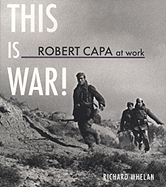
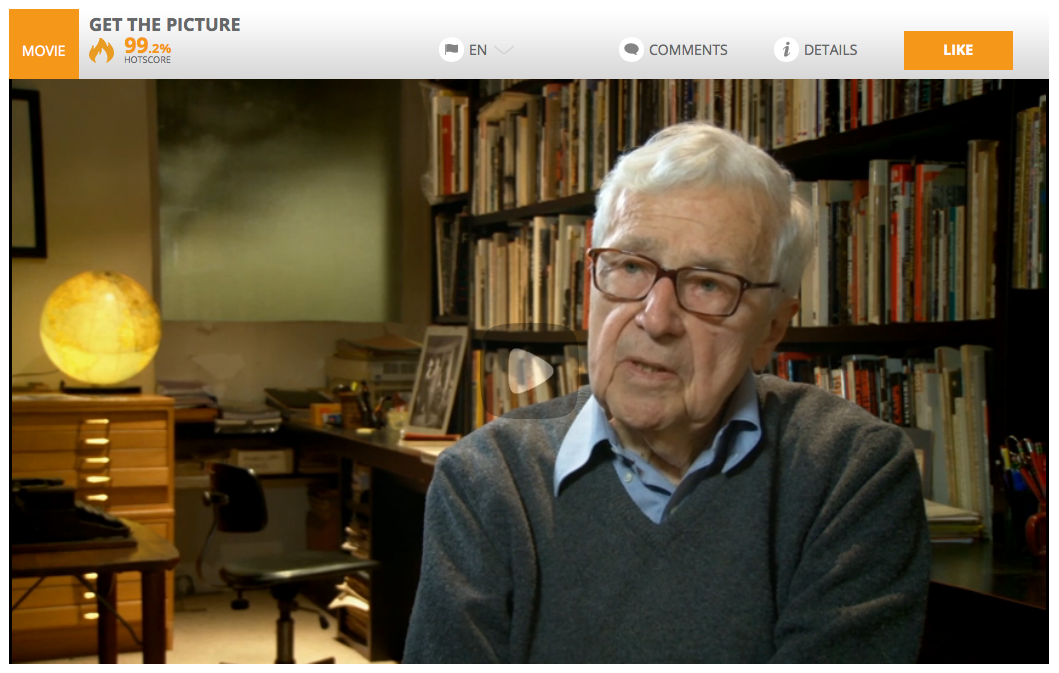
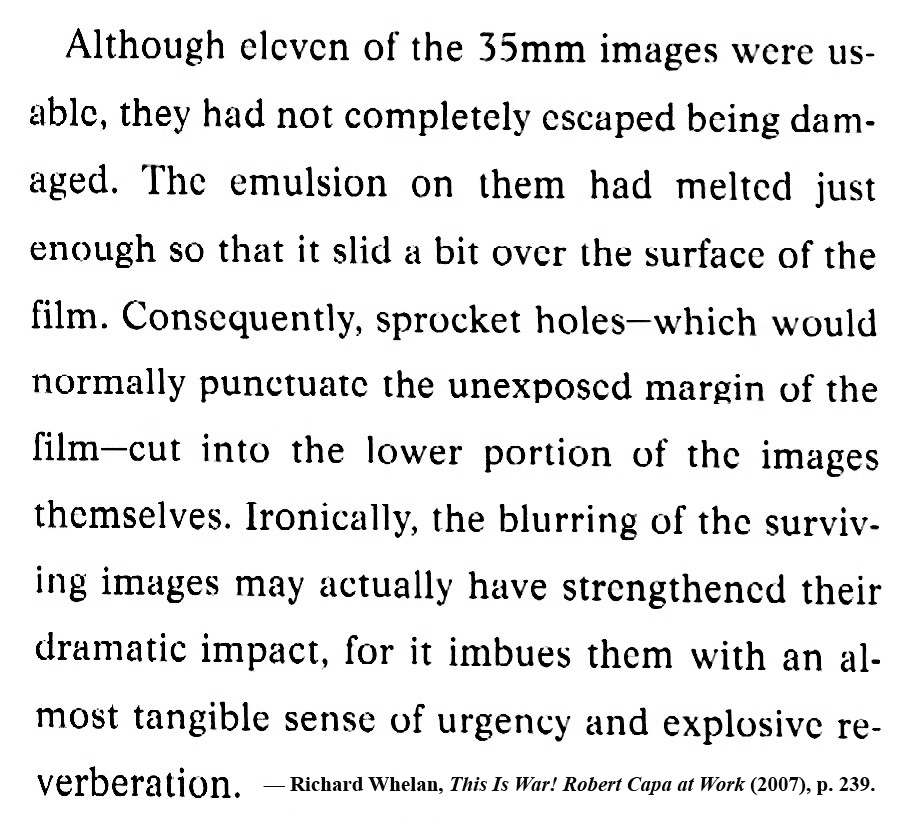
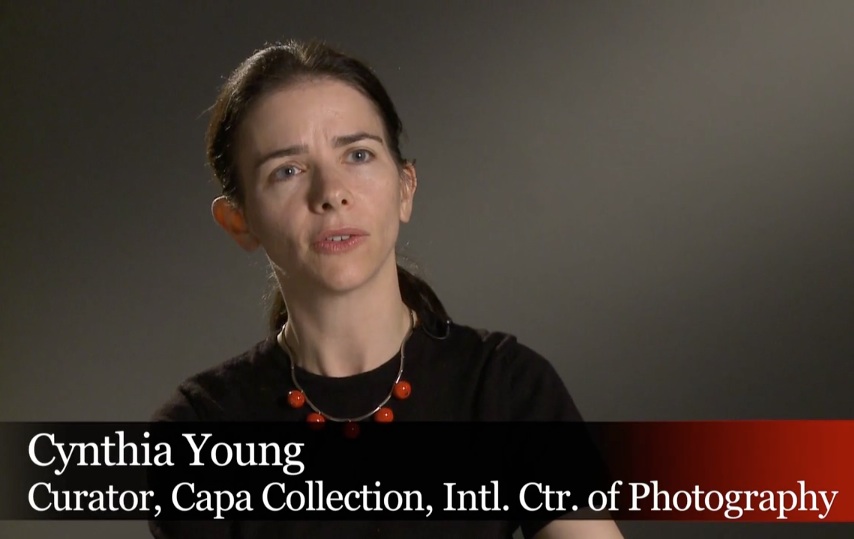
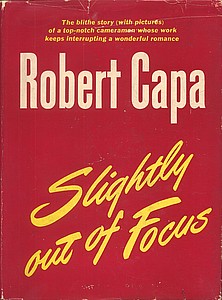




At his blog Déjà vu: Carnet de recherche visuel, the French scholar Patrick Peccatte has cited this series on Capa in a post titled “Images numériques et photographies publiées” (“Digital images and published photographs”).
Peccatte, a serious researcher, has done some useful spadework on the first appearances of Capa’s D-Day images (before the June 19, 1944 issue of LIFE hit the stands). All in French only.
He makes one elementary error, however. The LIFE issue datelined June 19, 1944 went on sale before June 19. Most periodicals, from weekly through monthly, set their datelines days or weeks later than their actual first day of sale. Thus the Capa pictures that Morris shipped to New York on the morning of June 8 had to travel there by courier, and get edited and laid out in the head office, for an issue that Morris indicates closed on June 10; those layouts had to get to the printing plant for the issue to be printed and bound, with the finished product finally trucked to newsstands by the morning of the 12th.
Thus readers would have LIFE‘s exclusive coverage of the Omaha Beach landing in their hands and before their eyes just six days after it occurred — not 13 days later, on June 19, the issue’s cover date.